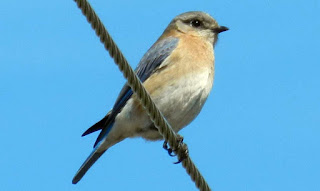Trying to be a better Tweeter
I'll admit, I've been slow to adapt to Twitter, and even now that I've been tweeting for over two years, I still feel out of my element and without focus when using the social media giant. I've been guilty of using Twitter to spam my book promos and haven't been a very interactive participant thus far. So I've decided to educate myself on using Twitter effectively and engaging with people, instead of just broadcasting lonely little tweets into cyberspace. I'm going to share my lesson plan with you here. These are not my ideas, rather a collection of tips I've picked up from all over the Internet, with a specific focus on Twitter for indie authors. My ultimate goal is to build followers through interaction on Twitter. Ideally, some of these followers will be interested in my books.
The directions below will be the road map I use to try and become a better Twit:
The Do List (some are painfully obvious, but I've been know to miss the forest for the trees):
Author Update: I'm writing the first draft of Warlock & Wyrm, Book III of The Oxbow Kingdom Trilogy and recently passed the 46,000 word mark, which, based on the way I write first drafts is approximately 2/3 complete. If you'd like to try the trilogy, you can get a free copy of Crimson & Cream at Smashwords with this code: JH88U.
The directions below will be the road map I use to try and become a better Twit:
The Do List (some are painfully obvious, but I've been know to miss the forest for the trees):
- Follow, thank, and reciprocate people who retweet (RT) your tweets.
- Ask people questions (if you truly are looking for an answer, not just as bait).
- Follow the '80/20 Rule.' Write 20% percent of your tweets about you and/or your writing, and focus the remaining 80% on others. RT, comment, share relevant content, recommend books and blog posts, etc.
- Use hash tags, but no more than 2 per post. I've read that this is good Twitter etiquette (Twitiquette?).
- Attach links to your tweets (Twitter will automatically shorten them). You can squeeze out a few more characters by shortening your link with bitly, Hootsuite or a similar tool.
- Maximize your 140 characters. List your message, be concise, add hash tags, links, and/or pictures when possible.
- Vary the content and presentation order of your tweets to avoid stagnation and repetition. Don't become predictable.
- Tweet quotes from your best book reviews and link to the review or the book (in moderation).
- Tweet quotes from your books, and link to where they can be purchased. This technique is like a mini-version of Bublish or Microcerpt. Again, use moderation.
- Try tweeting in the afternoons and near weekends, especially Thursday and Friday afternoons. Reportedly, these are high traffic times for Twitter. I am using Hootsuite to schedule my posts during these hours, but I also plan to be available online at these times, to interact with any followers who respond.
- Use Twitter Lists to organize your followers. For example, create a list of followers who comment about your book as a way to keep track of and stay in touch with them. Same thing for book reviewers, blogs, regular retweeters, personal favorites, friends, etc.
- Check the Twitter Glossary when you're confused or uncertain.
The Don't List:
- Don’t set up an auto-message that sends a tweet to everyone who follows you. Since I find these tweets annoying, doing it myself would be hypocritical.
- Don't try to sell your book, especially with spammy tweets. This one is tough. Try to craft a creative tweet that is not a sales pitch and contains some value to the reader.
- Avoid validation services, for the same reasons as auto-messaging. It's like telling your potential followers "my time is more valuable than yours."
- Don't recycle your tweets. Nobody likes reruns.
Author Update: I'm writing the first draft of Warlock & Wyrm, Book III of The Oxbow Kingdom Trilogy and recently passed the 46,000 word mark, which, based on the way I write first drafts is approximately 2/3 complete. If you'd like to try the trilogy, you can get a free copy of Crimson & Cream at Smashwords with this code: JH88U.

Comments
Post a Comment